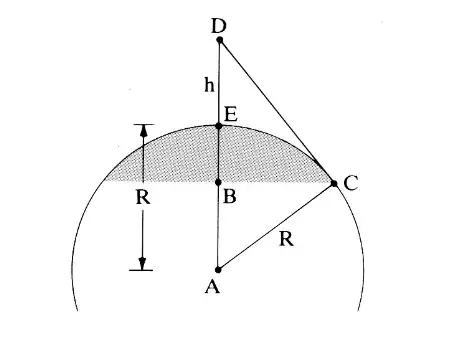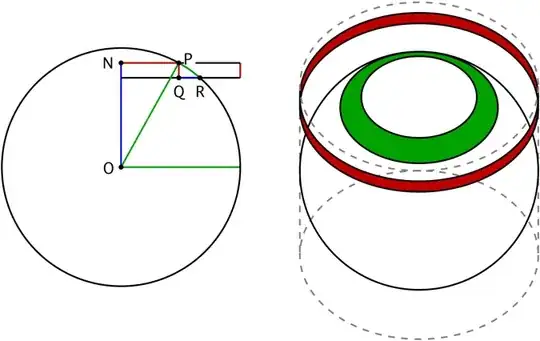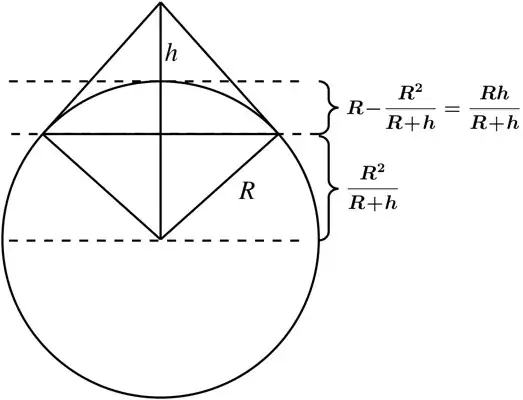EDIT: I need help converting the right side to a function of h
Let $A_h$ be the area of the zone corresponding to height h. If we set up a rectangular co-ordinate syustem with the origin at the center A of the spherical Earth with radius R, and if the surface of the earth is obtained by rotating the curve $x = g(y), y_B \le y \le y_E$ about the y-axis, then the surface area is given by $$A_h = 2\pi \int_{yb}^{ye} g(y) \sqrt{1+[g'(y)]^2} dy$$ 1. Derive a formula for the observable area $A_h$ as a function of the altitude h above the Earth's surface.
Okay, so I've been looking at this problem for a few days now and I'm having trouble deriving this equation based on the pictue. I know I need to revolve the curve $CE$ around the y axis but I'm having a hard time figuring out what the equation will be. I know this has to do with horizon and such, and the equation for line $$CD = \sqrt{h(2R+h)}$$ I also know the $$\sqrt{1+[g'(y)]^2}$$is an arclength
I'm just very confused becuase I know once I plug all these numbers in I will get a constant and integrating a constant is just adding (in this case) a y the result and then plugging in the bounds. Once I find this equation I have the answer for the rest of these problems.
(First post, I'm sorry if this isn't super clear, all help is greatly appreciated)





